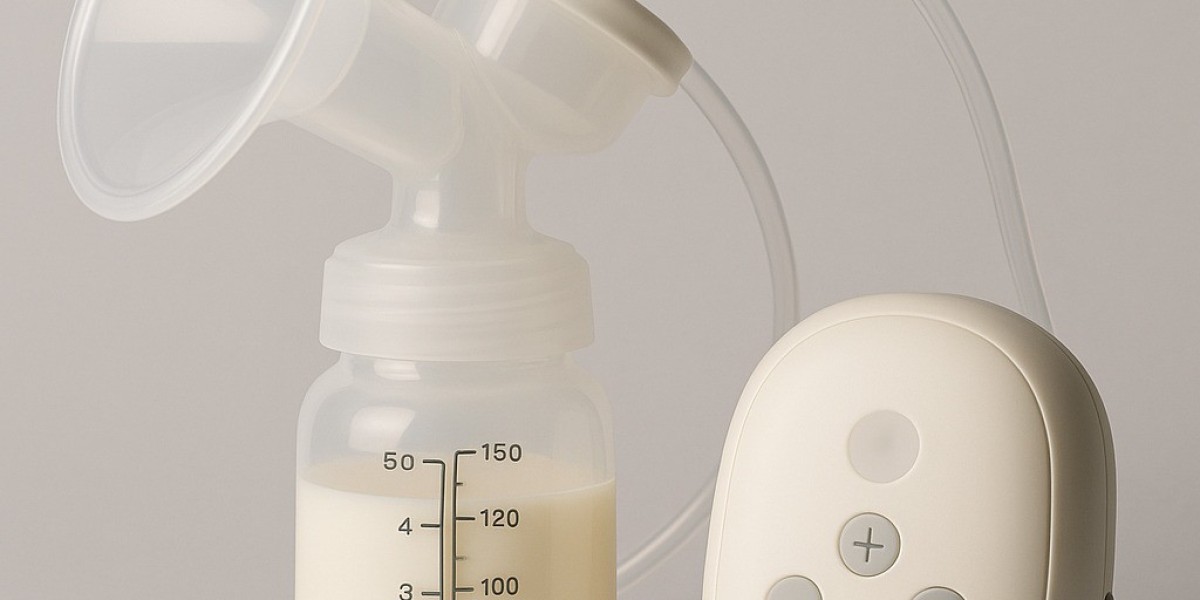The breast pump market is expanding rapidly, fueled by rising awareness of breastfeeding benefits, increased participation of women in the workforce, and the growing demand for convenience-oriented maternal care solutions. To maintain a competitive edge, industry players are implementing calculated strategic moves that redefine how breast pumps are designed, distributed, and marketed. These strategies are not limited to technological innovation but extend to mergers, acquisitions, partnerships, and regional expansion—actions that collectively shape the trajectory of the global market.
One of the most impactful strategic moves has been mergers and acquisitions. Leading manufacturers are acquiring smaller firms to consolidate market share, gain access to advanced technologies, and broaden their product portfolios. This approach allows them to integrate unique designs, patents, and innovations into their existing product lines, giving them a competitive advantage. Acquisitions also facilitate quicker entry into new regional markets where local companies already have established distribution channels and brand recognition. By leveraging these synergies, larger players accelerate growth while reducing competitive pressure.
Product diversification is another crucial strategic move. Companies are moving beyond traditional breast pump models to create comprehensive maternal care ecosystems. For example, brands now integrate storage solutions, sterilizers, lactation consulting services, and mobile health apps into their offerings. By bundling products and services, firms provide mothers with a complete experience, ensuring loyalty and reducing the likelihood of switching to competitors. Diversification also helps brands cater to a wider consumer base, from first-time mothers seeking affordable manual pumps to professional women demanding high-performance, smart electric models.
Geographic expansion is another move reshaping the competitive landscape. While North America and Europe remain the largest markets, Asia-Pacific and Latin America are witnessing strong demand growth due to rising urbanization, increased healthcare spending, and cultural shifts toward working mothers. Companies are investing in localized marketing campaigns, establishing partnerships with regional distributors, and tailoring product designs to cultural expectations. For instance, compact and affordable designs are emphasized in emerging economies, while premium, technology-enabled models dominate in developed markets. This dual approach ensures global reach and diversified revenue streams.
Digital health integration is one of the most innovative strategic moves. By embedding Internet of Things (IoT) features and smart connectivity into pumps, companies create value-added services that enhance user experience. Mobile applications connected to pumps allow mothers to track pumping sessions, monitor milk supply, and receive personalized recommendations. Some firms are exploring artificial intelligence to predict optimal pumping schedules and address individual lactation challenges. These digital enhancements not only improve functionality but also position breast pumps as part of modern, tech-driven maternal care solutions.
Strategic partnerships with healthcare providers are also central to market growth. Companies are collaborating with hospitals, maternity clinics, and lactation consultants to promote their products as essential tools in postnatal care. This integration into healthcare systems enhances product credibility and creates new sales channels. In markets where insurance coverage is strong, these collaborations often lead to partial or full reimbursement for pumps, further boosting adoption rates. By aligning with healthcare professionals, manufacturers strengthen consumer trust and establish themselves as vital contributors to maternal health.
Marketing strategies have also taken a strategic turn. Companies are moving away from traditional advertising and adopting community-focused, digital-first approaches. Engaging with mothers through online platforms, social media influencers, and parent-support communities allows firms to build authentic connections. Customer education campaigns that emphasize both the health and lifestyle benefits of breast pumps play a critical role in normalizing their use. These strategies foster emotional resonance and position products as supportive tools rather than mechanical devices.
Sustainability has become another pillar of strategic moves in the market. With growing consumer awareness of environmental responsibility, companies are adopting eco-friendly materials, recyclable packaging, and energy-efficient pump designs. Some are also developing rental and sharing models that make pumps affordable and reduce waste. These moves not only enhance corporate image but also appeal strongly to environmentally conscious parents. Sustainability strategies ensure companies remain aligned with global health and environmental goals, building long-term brand value.
Another important move involves strengthening after-sales support and service networks. Recognizing that customer satisfaction drives repeat purchases and positive word-of-mouth, companies are enhancing warranty policies, offering product training videos, and providing responsive technical assistance. Some brands have introduced app-based support, allowing mothers to troubleshoot issues in real-time. Such initiatives reduce usage barriers and encourage continued reliance on pumps, ultimately driving customer retention and market expansion.
Finally, many firms are investing in targeted research and innovation as part of their long-term strategies. Instead of generic product development, companies are focusing on specific consumer pain points such as noise reduction, portability, and efficiency. This approach ensures that each innovation directly addresses market demand, enhancing competitive differentiation. By investing in evidence-based design improvements, companies create products that are not only technologically advanced but also closely aligned with the real-world needs of mothers.
In summary, the breast pump market is witnessing a wave of strategic moves that extend across product, geographic, technological, and operational dimensions. From acquisitions and diversification to digital health integration, healthcare collaborations, and sustainability initiatives, companies are making bold moves to secure leadership positions. These strategies not only expand market reach but also elevate the role of breast pumps as indispensable maternal care tools. Firms that effectively combine innovation, customer engagement, and healthcare integration are set to dominate in this competitive and rapidly evolving sector.






